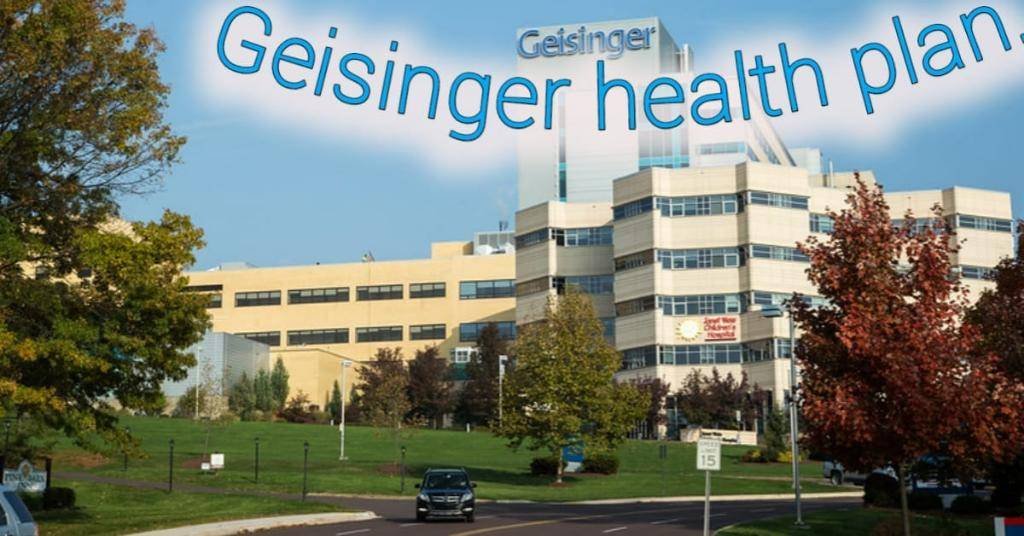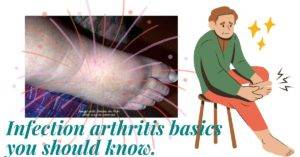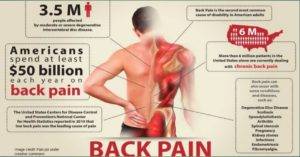
Table of Contents
The Geisinger Health Plan is a regional health maintenance organization (HMO) that opened in 1972 at the Geisinger Medical Center.1 The National Library of Medicine. (governmental authority) visit source (cited 24 May 2022) 2 Europe PMC (Scholarly source) visit source It provides the minimum essential coverage to nearly 600,000 members in 45 counties of Pennsylvania and it is ranked among the top ten health plans in the US.
It has its headquarters in Danville, Pennsylvania with a service area that covers most of the counties in the state plus parts of Bedford and Elk. It is accredited by the National Committee for Quality Assurance.
Geisinger health plan is part of the Geisinger health systems that serve about 3 million residents in central Pennsylvania.3 Health affairs. (Scholarly source) visit source Studies have shown its operations have helped to drive down the cost of healthcare.4 BMC (scholarly source) visit source
How the plan works.
Your health care is coordinated by any of the in-network primary care physicians you choose who refer you to specialists when you need one. However, you may self-refer to any other provider within the network without a referral from your primary care physician.
Covered services include:
- Hospitalizations,
- Outpatient services,
- Diagnostic examinations,
- Vision,
- Dental,
- Wellness programs,
- Routine checkups,
- Physical therapy and rehabilitation,
- Immunization and preventive health services, plus numerous others, may be ordered by your primary care physician.
Do keep in touch by subscribing to our newsletter:
In an insured year, you foot your medical bills, except for preventive services, till you have reached a stipulated amount for that year known as your annual deductible. Your Geisinger health plan benefits start at this point and the company begins to pay its part of the costs while you start paying a percentage of it called coinsurance.
Coinsurance payments continue till you have reached your out-of-pocket maximum for that year. Reaching your out-of-pocket maximum will bring coinsurance payments for most covered procedures to an end as the company starts paying all the bills for those services.
However, you will still have to make copayments for prescription drugs, and the plan’s covered office visitations.5 The US Office of Personnel Management (governmental authority) visit source
The health plan coverage is usually available within Geisinger’s service area. Only when given by its network of providers will the company pay for any service except in instances of emergency health care.
Any medical services sorted out-of-network or out of the service area will not be given attention unless it was pre-authorized. It will be wise to enroll with insurers that operate in your new area if you relocate outside the service area of the Geisinger health plan.
Accessing the Geisinger health plan
Living and working within its service area where its health care providers practice is important in accessing the Geisinger health plan. This is the first point for consideration. Other steps are the selection of your PCP and a means of formal identification from the company.
Primary care Physician
You should find much of the enrollment process very much like the usual procedure if you have had to buy a health insurance plan before. You will also have to fill out a form for the selection of your primary care physician or call to make that selection.
This is very important as the PCP is borne with the responsibility of managing or coordinating your health care.
The Geisinger plan identification cards
After your enrollment, the company will send you its identification card within 30 days. With this, you can access health services from its providers and fill prescriptions from its plan pharmacies. Before the reception of this ID, you could still use the following to access services.
- The health benefits enrollment confirmation,
- The health benefits election form: SF-2809, or
- Your electronic enrollment system confirmation letter.
Failure to receive your ID card within the stipulated time frame will be addressed by calling: 800-447-4000 or writing to customer service at:
100 North Academy Avenue,
Danville, PA 17822-3229.
Prior approval services.
In the Geisinger health plan, there are still services you will be liable for the costs if your in-network provider does not get prior authorization for them. Share on XIt’s advised you call their customer care line, 800-447-4000, for the list of these services some of which are:
- Home health care,
- Bariatric surgery for obesity,
- Home hospice care,
- Durable medical equipment (DME),
- Inpatient hospital admissions,
- Out-of-network referrals,
- Skilled nursing facilities admissions,
- Transplantation services,
- Backpain injection therapy,
- Gender reassignments,
- Inpatient mental health services, etc.
Requirements for approval requests.
1. A call must be made to the customer care line by you, your doctor, the hospital, or any other service provider for the approval of the service before it is rendered.
2. The following information has to be provided:
- Your name and plan ID,
- Your date of birth,
- Your Identification number,
- Phone number,
- The reason for hospitalization,
- The planned length of hospital stay,
- Planned treatment,
- Hospital or facility name,
- The name of the admitting doctor or physician,
- The phone number of the admitting doctor or physician.
Geisinger health plan costs.
Generally, you will be liable for the payment of your deductibles, coinsurance, copayments, and payment for non-covered health services and supplies.6 The US Office of Personnel Management (governmental authority) visit source Be that as it may, payments made on non-covered services and supplies are not considered as part of the cost of the Geisinger health plan.
What you pay out-of-pocket for the covered services are the costs associated with the plan and they are known as cost-sharing. These include the cost of deductibles, copayments, and coinsurance.
Deductible.
This is a fixed amount of payment to be incurred on some covered services within the year, excluding copayments, before your insurance benefits kick in. For the Geisinger health plan, the deductibles are as shown in the table below.
|
Description of enrollment |
Cost |
|
Standard option self only. |
$750 per person. |
|
Standard option self plus one. |
$1,500 combined. |
|
Self and family. |
$1,500 combined. |
|
Source: OPM.gov |
|
Copayments.
This is a fixed amount of money you pay each time to your health care provider, pharmacy, or facility when you go to receive their service. The copayments are shown in the table below.
|
Visit to: |
Cost |
|
Primary care physician. |
$20 per visit. |
|
Specialist. |
$35 per visit. |
|
Emergency room. |
$150 but waived if admitted. |
|
Source: OPM.gov |
|
Coinsurance.
It is the percentage of Geisinger’s health plan allowance you have to pay for the covered services you received. It starts only after you have reached your deductible for the insured year. Below are percentages for some specific services.
|
Service/item |
Coinsurance percentage |
|
Inpatient hospitalization. |
20%. |
|
Surgical procedures. |
20%. |
|
Orthopedic devices. |
50%. |
|
Source: OPM.gov |
|
The catastrophic protection out-of-pocket maximum.
This is simply a fixed amount that the sum of your cost-sharing out-of-pocket expenses (deductibles, copayments, and coinsurance) must get to in the insured year for your Geisinger health plan to begin paying all of your expenses on covered services.
The catastrophic out-of-pocket maximum is $5,000 for self-only enrollment and $10,000 for self plus one or self and family. It is important to note that the $5,000 out-of-pocket maximum applies to an individual enrollee irrespective of the enrollment type.
For instance, in a self and family enrollment, the first person whose out-of-pocket maximum hits $5,000 will have Geisinger paying all of that individual’s remaining qualified medical expenses from that point on within the insured year.
However, the remaining members in the plan will go on accruing medical expenses on covered services till the sum reaches $10,000 for that year. This is the point where the insurance takes full responsibility for the payment of all qualified medical costs within the insured year for all the members.
Geisinger health plan: Vision.
Geisinger does have a great vision health plan and boasts of some of the leading eye specialists in Pennsylvania covering a range of diagnostic procedures, and eye conditions such as:
- Dry eyes,
- Diabetic retinopathy,
- Cataract,
- Macular degeneration
- Glaucoma,
- Corneal abrasions, etc
Whereas some of the services rendered are free, like routine checkups, there are some on which you pay the full bill as shown in the table below.
|
Service type. |
What you pay. |
|
Preventive vision tests for children under 17 years |
PCP-$20 SCP-$35 |
|
Diagnostic exams for the need for vision correction |
|
|
Annual eye refractive error determination |
Nothing |
|
Eye examinations for Diabetics |
|
|
Not covered services: Glasses, contact lenses and their replacements, refractive surgery, orthoptics, and eye exercises |
All the charges |
|
Source: Opm.gov |
|
Geisinger health plan: Dental.
The Geisinger health plan offers dental benefits through two dental networks. These are Guardian Dental for adult plans and Skygen for pediatric or children plans. These plans both provide as much as 100% coverage for preventive dental services, however, inpatient dental services are not covered unless there is a non-dental physical impairment that makes it necessary.
Replacement surgeries are not covered. What is covered are restorative services for accidental damages to natural teeth that did not result from biting and chewing.7 The US Office of Personnel Management. (governmental authority) visit source Some of the covered dental services include:
- X-rays,
- tooth extractions,
- Root canal treatments,
- Pre-existing conditions (Guardian dental),
- Repairs and maintenance,
- Fluoride treatments (Skygen),
- Oral examinations and cleanings, etc
For non-covered dental health services, you are expected to foot the bills as shown in the table below.
|
Service description |
What you pay |
|
Restorative services and supplies that are designed for the repair of your natural teeth. |
20% of the bill after deductible. |
|
Non-covered services: All crowns and root canal treatments, Implants, and bridges. |
All the bills. |
|
Source: OPM.gov |
|
Conclusion.
The decision to join HMOs should come from a preference for their benefits rather than out of likeness for a particular provider. Providers could come and go at any time and there will always be others in the same field within the network capable of giving similar satisfaction in service delivery if not better.
You may also be interested in finding out about the cost of long-term care insurance8 Healthcrust article (trustworthy) see the article and health insurance deductible for the self-employed.9 Healthcrust article (trustworthy) see the article































































































































































You actually made it seem really easy with your presentation. I’m a looking forward to your subsequent posts!
I found something really interesting about your website so I saved to fav.